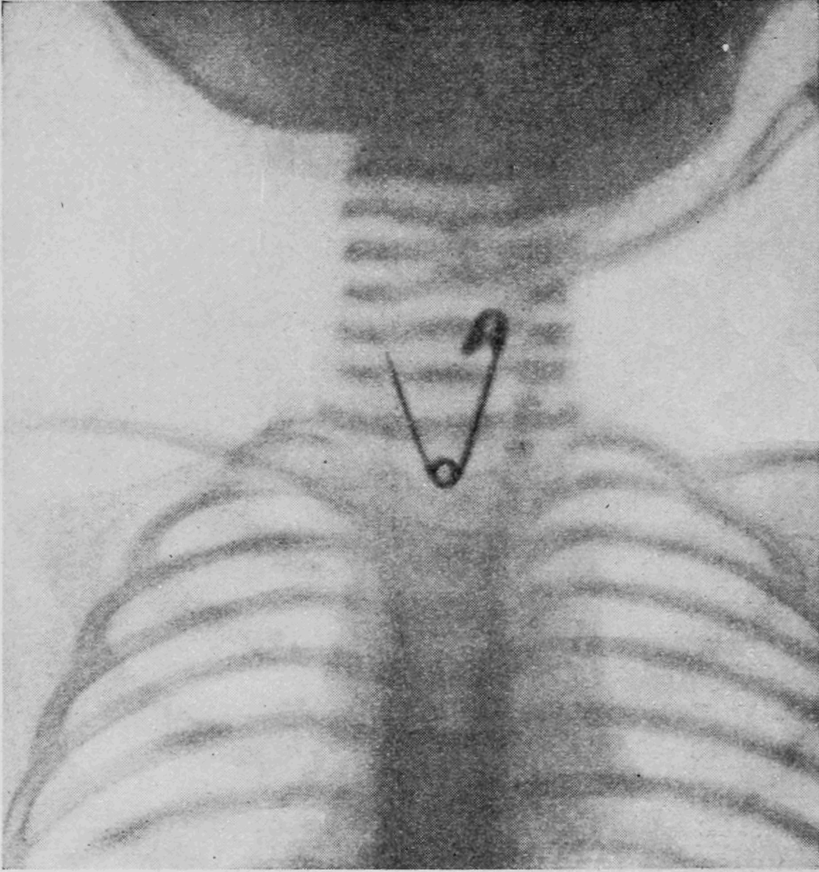X-Ray Finds Safety Pin in Baby's Throat
REMOVING an open safety pin which was swallowed by a seven-months-old baby with the sole aid of X-rays and a snare, was the remarkable operation recently performed by Dr. G. S. Otrich, of Belleville, Ill.
When an X-ray photograph was taken of the child, it was discovered that the open pin was lodged in the esophagus, with the point sticking upward towards the child's mouth. The X-ray tube was arranged beneath an ordinary table, so as to throw the light upward, and the child placed so that the light from the tube would be in a direct line. A fluoroscope was adjusted directly over the child, and the obstruction became clearly visible. The doctor passed a small snare into the esophagus, and with infinite care passed it slightly beyond the pin. After withdrawing it until the pin seemed to be engaged, he closed the snare. On the first attempt the pin was closed and withdrawn.
A Foot-controlled Sewing Machine
MOTORS for driving sewing machines have been improved so that they can be carried about by a seamstress and used in any house that is wired for electricity and attached to any machine in half a minute. The motor is equipped with feet so that it can be set on the stand and applied to the flywheel of the sewing machine without the use of any screws or arms. In addition it is governed by a pedal which controls the speed, from a stitch a minute to eight hundred stitches a minute.
The motor stand is simple, depending on the weight of the motor and its rubber feet for stability. The little ledge of the sewing machine itself forms a brace so that permanent attachments are not needed.
The pedal sends the current through a rheostat of varying resistance to obtain the different speeds required by the operator of the sewing machine. Thus the sewing machine can be electrically driven wherever there is a light socket.
The motor and its attachments are light enough to be easily carried from house to house.
By using it the work of a dressmaker is lightened by at least a half, and the physical tire of working is almost completely eliminated.


